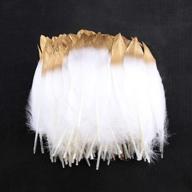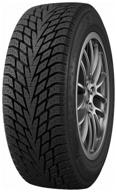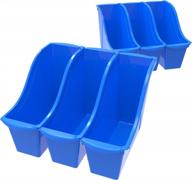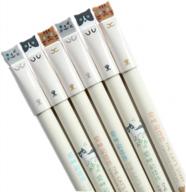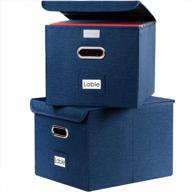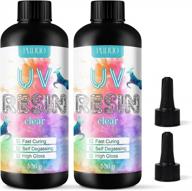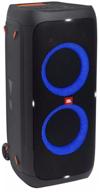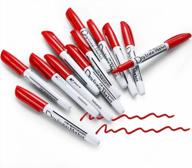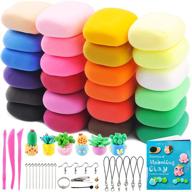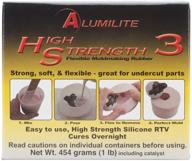Another interesting products
Sculpting Tools for Beginners
Getting started with sculpting is an exciting endeavor, but having the right tools makes the process much easier. Here are some of the basic sculpting tools beginners will need to start shaping clay into works of art.
Sculpting Clay
The most essential supply is the sculpting medium itself. The most common choice for beginners is polymer clay which comes in a variety of colors and finishes. Some popular brands include:
- Sculpey
- Fimo
- Premo
- Cernit
Polymer clays can be easily shaped at room temperature then hardened in a regular oven. Other options include air dry clay and pottery clay.
Top products in 🗿 Sculpture Supplies
Sculpting Tools
Having a set of basic sculpting tools makes shaping and detailing clay much simpler. Useful tools include:
| Tool | Uses |
|---|---|
| Rolling pin | Flattening and smoothing clay |
| Clay roller | Shaping clay into sheets and textures |
| Loop tools | Smoothing seams and fine details |
| Spatulas | Applying pressure and flattening |
| Cutting tools | Cutting shapes and divisions in clay |
Silicone tipped sculpting tools are great for shaping without sticking to the clay. Metal tools like loop tools and spatulas can also be used with care.
Texturing Tools
Creating interesting textures makes sculptures more realistic and visually appealing. Some handy texturing tools include:
- Clay shapers - Brush-like tools for textures
- Clay extruder guns - Press clay through nozzles for lines
- Toothpicks or needles - Press into clay for fine textures
- Found objects - Press items into clay to imprint textures
- Rubber stamps - Press designs into clay
Things like lace, bubble wrap and leaves can be used to create unique patterns.
Finishing Supplies
Once sculpted, pieces made from polymer clay are cured in a normal oven then painted or sealed. Useful finishing supplies include:
- Acrylic paints
- Clear matte or gloss sealants
- Sandpaper and steel wool for smoothing
- Polymer clay glazes
- Varnish
With the right selection of sculpting tools and materials, beginners can start exploring their creativity in three dimensional clay artworks.
Similar products
Basic Sculpting Tools to Get Started
Beginning sculptors need only a few fundamental tools to start shaping and carving basic forms. Investing in high-quality basic supplies allows room for your skills to grow over time.
Sculpting Mediums
Clay is the most common medium for sculpting. The three main types are:
- Polymer clay - Plastiline modeling compound that cures in a regular oven. Easy to work with and available in many colors. Brands like Sculpey and Fimo are popular.
- Pottery clay - Water-based clay that requires firing in a high heat kiln. More difficult to work with but can create permanent ceramic sculptures.
- Modeling clay - Oil or wax-based clay that does not require curing or firing. Easy to shape but not permanent.
Polymer clays like Sculpey Firm are a great starting choice due to their flexibility and ability to cure at home into a permanent sculpture.
Sculpting Tools
These simple tools form the basics of a beginner sculpting toolkit:
| Tool | Purpose |
|---|---|
| Clay roller or acrylic roller | Flattens clay into sheets and textures |
| Loop tools | Smoothes seams and shapes details |
| Spatulas and knives | Cuts, lifts and applies pressure to clay |
Good starter sets like the Sculpey 13-Piece Tool Set provide these essentials. Look for metal tools with comfortable grips. Silicone tipped tools are also useful for smoothing clay without sticking.
Everyday Home Items
Many common household items can act as sculpting tools:
- Rolling pin - Flattens slabs of clay
- Plastic utensils - Cut, shape and smooth clay
- Toothpicks or chopsticks - Detail lines and textures
- Containers - Store and transport clay
While specialized sculpting tools are ideal, improvising with items around the house can get you started sculpting quickly and cheaply.
Texturing Tools
Adding texture brings sculptures to life. Easy texturing tools include:
- Natural items - Press leaves, seashells or feathers into clay
- Clay shapers - Create patterns like scales or fur
- Toothbrush - Stippling effect
- Clay extruder gun - Extrude lines and details
Texture mats and stamps quickly add effects like brick, wood grain and more. Found objects can leave highly unique impressions in clay.
Finishing Supplies
Polymer clay is cured in a home oven then painted or sealed. Useful finishing supplies include:
- Acrylic paints
- Polymer clay glazes
- Clear finish spray
- Sandpaper and steel wool
A simple toolkit of quality clay, essential sculpting tools, improvised items and finishing supplies empowers beginners to start sculpting right away.
Affordable Starter Kits for Sculpting
Sculpting is an enjoyable hobby that can be done on a budget. Affordable starter kits provide beginners with all the basic tools and materials needed to start sculpting without breaking the bank.
Polymer Clay Kits
Polymer clay is an excellent sculpting medium for beginners. Pre-packaged kits contain clay and essential tools:
- Sculpey Starter Pack - 2 lbs clay, glaze, tools - $13
- Pemo Studio Basics - 24 colors clay, roller, blades - $25
- Fimo Mini Mudbox - 22 colors clay, leaflet inspiration - $18
Look for kits that offer an assortment of colorful clay and a basic set of tools like a roller, loop tool, blade, and smoothing tool. This provides everything needed make small sculptures, charms, figurines and more.
Pottery Wheel Kits
For aspiring potters, pottery wheel starter sets are affordable options to learn throwing clay. Useful kits include:
- Brent C-EZ Wheel Kit - Wheel, clay, tools, guide - $140
- MCT Pottery Wheel Starter - Electric wheel, foot pedal, tools - $99
- Pottery Wheel Beginner Kit - Manual wheel, clay, wheel tool - $55
Basic wheel kits start under $100 for manual kick wheels or closer to $150 for electric. Look for sets with clay, wheel tool, and bat to get started.
Air Dry Clay Kits
Air dry clay is mess-free and does not require baking. Great for kids and beginners
- Air Dry Clay Toolkit - 5 lbs clay, carving set, guide - $25
- Crafty Kids Toolkit - Clay, sculpting tools, e-book - $18
- Model Magic Kit - Clay, tools, project guide - $15
Air dry clay easily shapes into sculptures, jewelry, decorations and more. Affordable kits have all you need to start crafting.
Essential Supplies
Beyond specialized kits, everyday items allow for sculpting on a budget:
- Plastic utensils - knives, forks, spoons for tools
- Rolling pin - Flattens and shapes clay
- Plastic containers - Store clay
- Paint brushes - Detail lines and textures
Household materials help fill gaps for sculptors on a budget. With an affordable starter kit and improvised tools, beginners can delve into sculpting without large upfront costs.
Tips for Choosing the Right Sculpting Clay
With the variety of sculpting clays available, it can be tricky choosing the right one for your project. Here are some tips for selecting the best clay type and brand for your needs:
Clay Categories
There are four main types of sculpting clay:
- Polymer clay - oven baked modeling clay
- Air dry clay - dries naturally and hardens over time
- Pottery/ceramic clay - hardens when fired in a very high temperature kiln
- Plasticine - oil or wax based clay that remains flexible
Consider the characteristics and workability of each to suit your goal.
Key Factors
Assess these factors when selecting clay:
- Workability - Is the clay easy to knead, shape, carve?
- Texture - Is the surface smooth or coarse?
- Strength - Does the clay hold fine detail?
- Durability - Will the finished piece last?
- Curing process - Does it air dry, bake or require firing?
- Color - Does it come in a good color range?
The ideal clay has the properties suited to your skill level and project.
Sculpture Size
Larger sculpts may require a sturdier base:
- Small figures - Polymer or air dry
- Life size busts - Pottery or ceramic clay
- Monumental pieces - Select very strong stoneware clay
Popular Brands
Known reputable brands of modeling clay include:
- Polymer - Sculpey, Fimo, Premo, Cernit
- Air dry - Activa Air Dry, Magiclay, Marcella
- Pottery - Laguna, Highwater, Amaco
- Plasticine - Van Aken, Monster Clay, Newclay
Research brand reviews and try a few to find your favorites.
Choosing the ideal sculpting clay takes some research and experimentation. Consider the characteristics needed for your project and test a few types until you find the best fit.
Essential Sculpting Materials
Sculpting is a rewarding art form that allows full creative expression in 3D. Having the right sculpting supplies leads to success. Here are some of the most essential materials for sculpting:
Sculpting Clays
Clay is the primary material for most sculpting. Common types include:
- Polymer clay - Plastiline modeling compound that cures in a home oven. Very workable and available in many colors. Brands like Sculpey and Fimo are popular.
- Pottery clay - Water-based clay that must be fired in a high heat kiln to harden. More difficult to work with but can create permanent ceramic sculptures.
- Oil/wax clay - Stays flexible and does not require curing or firing. Easy to shape but not permanent. Plasticine is a well-known brand.
For example, polymer clays allow shaping fine details like jewelry pendants that become solid pieces after baking. Pottery clays are better for larger solid sculptures like garden decor.
Sculpting Tools
Specialized tools make sculpting easier for shaping, texturing, and detailing. Essential tools include:
- Loop tools - Smooth seams and create details like eyes, folds of clothing, etc.
- Spatulas - Flatten and apply pressure for shaping.
- Clay shapers - Create textures like scales, fur, etc.
- Rolling pins - Flatten slabs of clay.
- Clay cutters/knives - Cut shapes and slices in clay.
Quality tools like the 10-piece Sculpt Pro tool set provide a versatile range for most projects.
Texturing Tools
Adding realistic textures takes sculpting to the next level. Useful texturing tools:
- Clay extruder gun - Extrude lines and details.
- Toothpicks, needles, brushes - Indent details.
- Natural items - Press leaves, feathers, etc. into clay.
- Fabric - Press cloth patterns into clay.
- Clay stamps - Press wood, rock, brick textures into clay.
A clay extruder allows creating textures like hair strands, piping on cakes, magic effects, etc.
Safety Gear
Protect yourself when sculpting:
- Dust mask - Avoid breathing in clay dust.
- Apron - Keep clothing protected from stains.
- Gloves - Guard hands from drying clay.
- Eye protection - When drilling or cutting clay.
Wearing a dust mask prevents lung irritation when sanding cured clay pieces.
Finishing Supplies
Polymer clay finishes by baking then painting. Useful finishing supplies:
- Acrylic paints
- Polymer clay glazes
- Sealants like Varathane
- Sandpaper and steel wool
Quality clay, tools, texturing items, safety gear and finishers cover the essentials for sculpting success!
Types of Sculpting Clay and Their Uses
Sculptors have several types of clay to choose from, each with their own characteristics and best uses.
Polymer Clay
Polymer clay is made of PVC resin and softens when conditioned. It cures into a hard, durable finish when baked in a regular oven. Brands include:
- Sculpey
- Fimo
- Premo
Polymer clay can be shaped with great detail and painted after curing. Best for small sculptures, jewelry, miniatures and decorative items.
Air Dry Clay
Air dry clay is water-based and dries naturally over time. It shrinks slightly when drying. Types include:
- Marcella
- Activa Air Dry Clay
- Magiclay
Air dry clay is easy to work with, non-toxic and does not require baking. Great for kids' projects and craft sculptures.
Pottery/Ceramic Clay
Pottery clay requires firing in a high heat kiln to cure. Varieties include:
- Earthenware - Fires at lower temperature, porous.
- Stoneware - Denser, fired at higher temperature.
- Porcelain - Very fine clay, translucent finish.
Pottery clay allows large solid sculptures like jars, vases, garden pieces. Excellent durability.
Oil/Wax-Based Clays
Clays like plasticine stay flexible and never cure. Types include:
- Plasticine
- Monster Clay
- Van Aken Plastalina
Oil or wax clays are easily shaped and reused. Mainly used for animation, model making and concept work.
Research the unique properties of each clay type to choose the best medium for your sculpting goals.
What Are Some Affordable Sculpture Supplies For Beginners??
Here are some affordable sculpture supplies for beginners:
- Polymer clay - It is easy to find and can be baked in the oven to fix it into shape. It is a popular material for making small pieces of jewelry.
- Plaster of Paris - It is easy to find at most art stores, inexpensive, and easy to mix. It can be poured into empty paper milk cartons. Peel away the paper after it sets, and you’re ready to create a sculpture.
- Balsa wood - It is soft and pliable, extremely easy to carve, and makes a suitable wood for beginning carvers.
- Clay - A 50-pound box of clay is recommended for beginners. It can be bought at local art supply stores.
- Wire armature - Screw a 1/2" flange with a 1/2" pipe on the wood base. It will serve as an effective armature for most sculptures.
- Sculpting tools - They are used to sculpt and give shape to your piece. They come in all wood or with wire tips. You'll need both.
- Ceramic tools - A stylus or small ball tool is useful for making a round depression in the clay. Small sets of them are available online for a reasonable price.
Sculpture Materials And Techniques
Sculpture is a three-dimensional art form that utilizes the space surrounding it, by incorporating itself or interacting with it. Sculptors use a variety of materials and techniques to create their works of art. Here are some of the most commonly used materials and techniques in sculpture:
Materials:
Techniques:
Sculptors use a combination of these materials and techniques to create their works of art.





